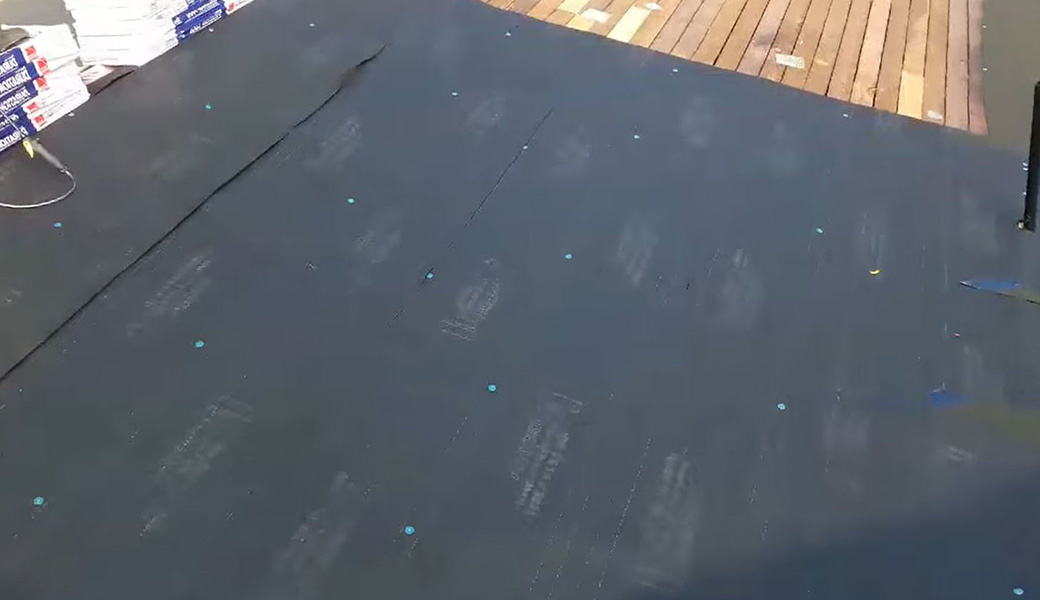Roof Underlay - Just How Important Is It?
Roof underlay or underlayment is an essential part of your roofing structure, and it should work to keep leaks at bay, keep the structure both wind and airtight, and also works as an additional layer of protection, stopping things (animals, rain, etc.) that shouldn’t be in the building, out.
Roof underlay is not a vapour barrier. Nor is it a type of insulation material. Instead, it works with both of those things, and the rest of the roof, to keep the entire structure safe and secure. That’s why picking the right one is very important. The wrong one could cause you problems later on, even causing the energy efficiency of the building to go down as it lets out cool air in the summer and hot air during the winter. Essentially, your home will be leaking whatever it is that you are paying to fill it up with. What's the point in heating your home only for your roof to let a large amount of that heat out?
The problem with roofing underlay, is that it needs to be airtight, but vapour-permeable. In short, the air inside the building kept inside, the air outside of the building kept outside, and all the while allowing any water vapour from the actual insulation material to escape. If it doesn’t, the insulation layer could fall victim to water/moisture damage, and cause water/moisture damage to the rest of the structure.

RIGID ROOFING UNDERLAY
Wood fibres are used to create this kind of roofing underlay, and they are rigid boards rather than a roll of material, just as the name would suggest. This is a great option for those who want to be eco-friendly with their roof, using recycled materials in some cases, and able to be recycled again once the roof is replaced or repaired, many years down the line. Unfortunately, wood fibre underlay boards tend to one of the more expensive options, and you may still need to incorporate another material, such as plastic or foil-based underlay, to finish the job and make sure that the entire roof is safe and secure.
Wood is a great material to use for insulation, though, and this can make it a great option for cold, but relatively dry places. Very wet places may require additional protection to ensure the wood-based underlay doesn’t get wet.
CEMENT FIBER UNDERLAY
Also known by a host of other names, including fiber cement boards, cement underlay, fiber rigid roofing underlay, and fiber underlay, this type is one of the strongest of them all. Using a mix of various fibers, including plastic, natural, and some cement, this underlay is usually put in place with an overlapping action, so that every area is covered, sometimes with a double layer.
Strong this type might be, but it’s not quite as good in the insulation department as wood fiber in rigid roofing underlay is. This is also slightly more expensive than other types, although it does tend to be worth it in the long run. The underlay boards are very strong, and are often a bit cheaper than boards made from wood fibers.
PLASTIC SEMI-RIGID BOARDS
These are one of the cheapest options for roof underlay, but they do come with their fair share of disadvantages, which can put some people off using them. Although study and solid, they can start to droop a little in the middle after a few years. The lightness of the usually synthetic materials make them a smart option for delicate structures, and also make it easier on the person or people installing them. Lighter = easier to get up the ladder!
FOIL MEMBRANE
The easiest underlay of them all to install, and also move around, is foil membrane, and it’s another option sitting on the cheaper end of the scale. The polypropylene, polyethylene, and polyester blends are sometimes reinforced with addition fibers, synthetic ones, to add extra strength and insulation.
The biggest drawback with this particular kind of roof underlay is that it can’t be stretched tightly as it is prone to tearing. You may also find that this type of roof underlay also needs a little extra maintenance, especially during periods of bad weather.
The best way to decide which type of roof underlay is right for your home or building, is to have a chat with your local roofing contractor or company. They will be able to give you exact prices per square footage for each of the materials, how long it will take to get the job done, and also what you can expect throughout the process. When it comes to your roof, you’ll only want to make those big decisions the once, and you’ll want to make them the right ones. It could be a very costly mistake to make, otherwise.
Visit our Roof Contractor home page to learn more about us, or hire a local professional from over 100 USA locations.

